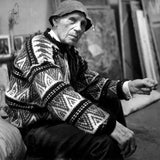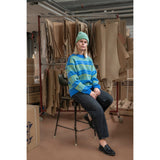Jóhannes Sveinsson Kjarval (1885–1972) occupies a special place in Icelandic cultural history as one of the most beloved artists of the nation. Throughout his art, he is said to have taught his compatriots to love and respect Icelandic nature.
Jóhannes Kjarval is one of those names in Icelandic art that made it even to the briefest of brief tourist brochures, and not only because he, just like his literary Nobel-prize-winning counterpart, uses a surname that is easier to remember than the usual patronymic.
At the beginning of 20th century and along with Þórarinn B. Þorláksson and Ásgrímur Jónsson, Kjarval was one of the first Icelanders to devote themselves fully to painting. He followed the usual route of Icelandic artists of that time: studied in Copenhagen, travelled to Italy and Germany but returned regularly to Iceland and eventually settled down in Reykjavík for good in 1922. In his work, however, Kjarval ignored the mainstream twists and turns of his times and developed his very own characteristic style.
The texture of his paintings evokes the texture of tight-growing moss tuft or loose locks of wool, and the freedom he takes in handling the paintbrush brings to mind the swirling outlines of El-Greco’s figurative painting four centuries ago. A milky mist of pale cobalt blue seems to veil the colours in most of Kjarval’s oil paintings, in particular those that take their inspiration in the realm of the supernatural. Visions of the supernatural side of the Icelandic landscape and the semi-visible beings that inhabit it play an important role in Kjarval’s work, in addition to realistic landscape paintings and portraits.
Kjarval donated a large collection of his works to the city of Reykjavik and part of this collection now makes up the permanent exhibition at Kjarvalsstadir, an art gallery built in 1973 primarily as a place to house the donated paintings. If you are in Iceland, don't miss out on it.
Kjarval's sweater is a historical recreation of a sweater he owned and used on various occasions. 100% Icelandic wool.
Produced in Iceland.






